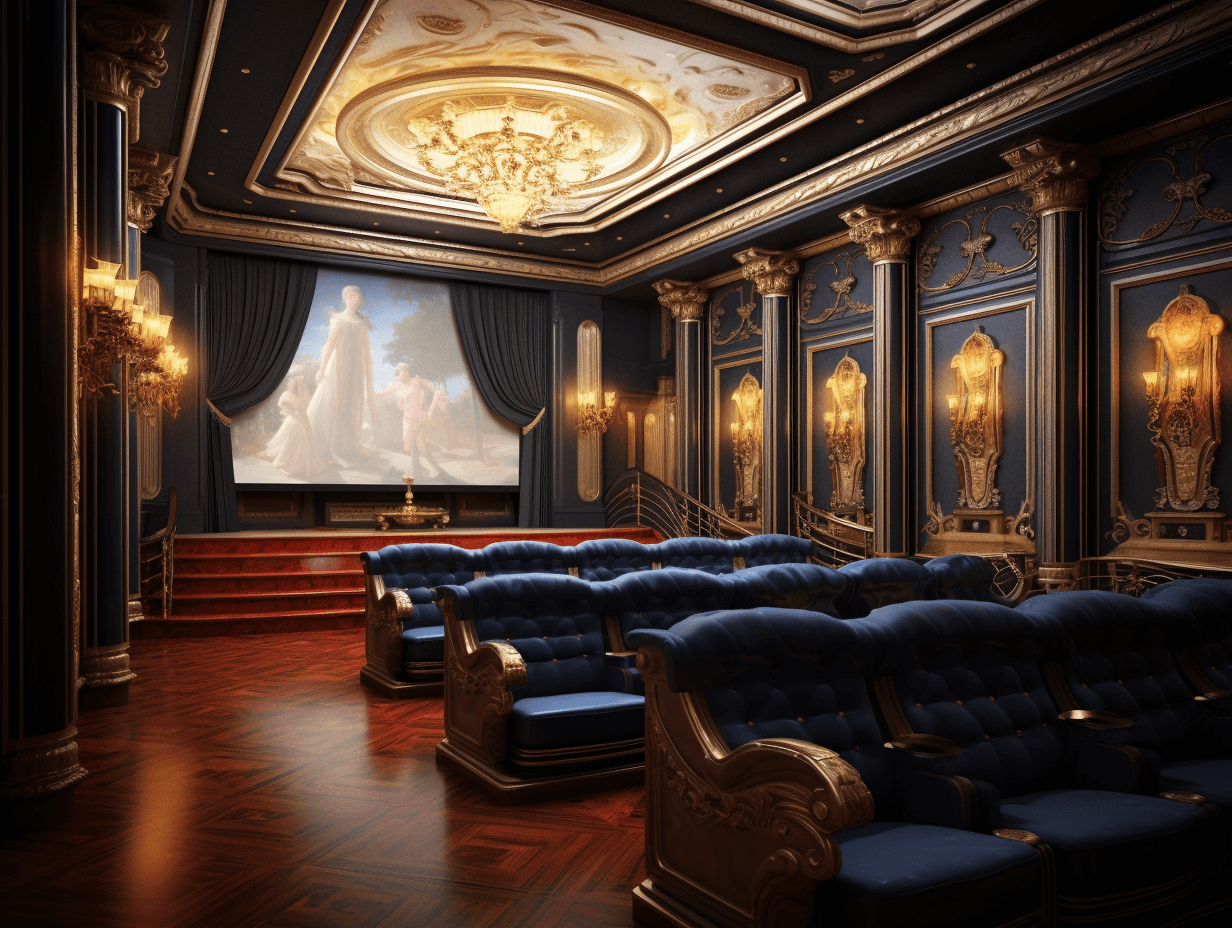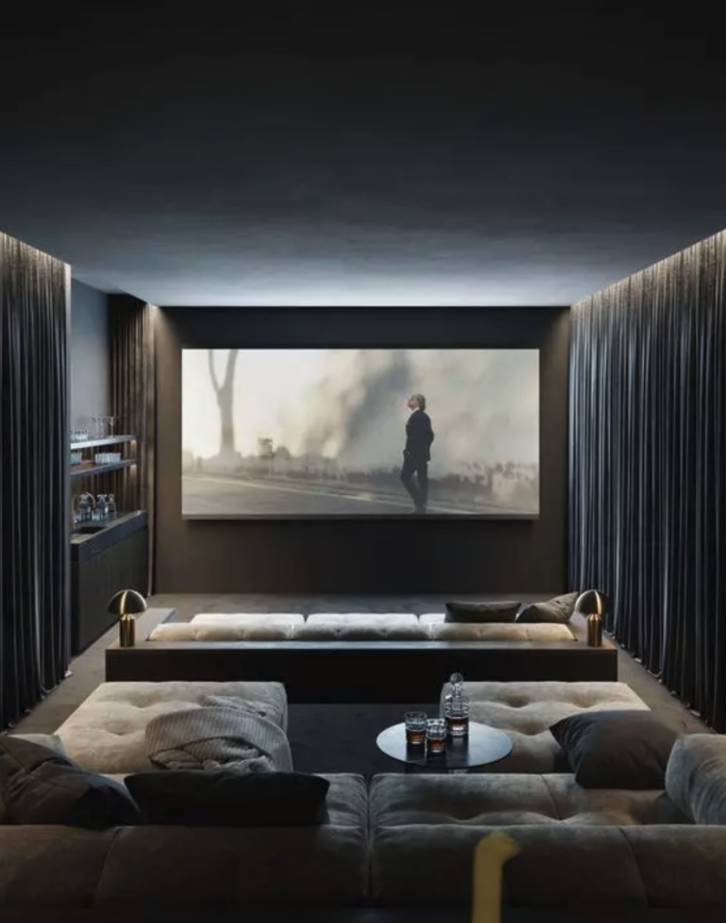Home Theater 101: Every Little Thing You Need to Know for a Cinematic Experience in your home
Producing a home movie theater that matches the motion picture experience of a business theater includes careful factor to consider of several parts, consisting of screen option, audio systems, and area design. Whether you are pondering the perfect screen dimension or the complexities of border noise, understanding these fundamentals is essential.
Selecting the Right Screen
When establishing a home theater, selecting the best display can make or damage the viewing experience - tampa home theater. The screen works as the focal point of your setup, influencing picture top quality, viewing angles, and general aesthetic. Secret aspects to think about include display type, size, and resolution
Initially, determine the proper screen dimension based on your area measurements and seating range. A general standard is to rest around 1.5 to 2.5 times the angled display size for optimal viewing. Next off, choose between various display kinds, such as fixed-frame, motorized, or retracting screens, each offering distinct advantages. Fixed-frame displays commonly supply the best picture high quality, while mechanized options permit flexibility in space use.
Resolution is another important factor. For a really immersive experience, consider a screen created for 4K or also 8K web content, making sure intensity and clarity. Furthermore, take into consideration the screen's gain, which impacts brightness and comparison; a higher gain can improve illumination in well-lit areas, while a reduced gain might be much more appropriate for darker settings.
Picking Audio Equipment
Audio equipment is an essential component of any type of home movie theater system, dramatically boosting the overall viewing experience. The choice of audio gear can identify the depth, clearness, and immersion of audio, critical for developing a cinematic environment.
When choosing audio tools, take into consideration a surround stereo, which generally includes a receiver, multiple audio speakers, and a subwoofer. A 5.1 or 7.1 channel system is recommended, where the first number represents the speakers and the second the speaker, providing an immersive soundscape. The receiver is the heart of the system, managing audio and video clip signals, and need to sustain modern-day styles like Dolby Atmos for an improved spatial experience.
Quality speakers are vital; try to find designs that provide a balanced sound profile with excellent bass action. Floor-standing speakers can create richer sound, while shelf choices conserve room. Furthermore, consider cordless choices for simplicity of installation, although wired systems usually supply exceptional efficiency.

Ideal Seating Plans
Developing an ideal home cinema experience pivots dramatically on ideal seating plans. The plan of seats plays a crucial role in both convenience and checking out high quality, directly impacting the total motion picture experience.
First, think about the screen dimension and seeing distance. An usual check over here guideline is to position seats at a range roughly 1.5 to 2.5 times the diagonal dimension of the screen. This ensures an immersive experience without stressing the eyes.
Next, elevation is vital. The back rows ought to be greater than the front to prevent blockages if your seating is in a tiered format. For level seating, make sure that the front row is not too near the screen, which everyone has a clear line of vision.
Additionally, consider the plan in terms of social characteristics. Group seating can boost the common experience, while specific seats may be preferred for personal watching.

Lastly, focus on comfort with ergonomic seating that sustains extended watching durations. Integrating recliner chairs or cushioned seats can considerably improve the experience, making the home theater a recommended location for both entertainment and relaxation.
Lighting and Atmosphere
Efficient illumination and setting are vital parts of a well-designed home theater, as they substantially affect the viewing experience. The best illumination can boost the motion picture feel, while poor options can detract from it. For ideal outcomes, take into consideration a layered lighting method view that includes ambient, task, and accent illumination.
Ambient lights gives basic lighting, ensuring that the space is not completely dark, which can strain the eyes. Dimmer switches are highly recommended, permitting modifications based on the material being seen. Task illumination, such as wall surface sconces or flooring lights, supplies useful lighting for tasks like analysis or navigating the area without interfering with the total ambience.
Accent illumination can be utilized to highlight architectural functions or produce focal factors, including depth and rate of interest to the space. LED strip lights behind displays or along shelves can provide a subtle glow that improves the aesthetic experience without frustrating the viewer.

Wiring and Installation Tips
A tactical circuitry configuration is important for accomplishing optimal efficiency in your house movie theater system. Proper wiring not just makes sure premium audio and video clip signals however likewise enhances the total aesthetic of your space. Begin by drawing up your design, identifying where each part will certainly be placed, including your display, speakers, and receiver.
When selecting wires, prioritize top quality, appropriately assessed electrical wiring to minimize signal loss. HDMI wires should be utilized for video clip connections, while audio speaker wire need to match the specs of your speakers and amplifier. Choose in-wall rated cords to abide by safety and learn this here now security standards and keep a clean appearance.

Final Thought
In recap, developing a remarkable home cinema experience needs mindful consideration of numerous elements, consisting of screen selection, audio devices, seating plans, illumination, and electrical wiring. By focusing on these variables, a motion picture atmosphere can be successfully replicated, allowing for immersive viewing experiences that match conventional movie theater settings.
Creating a home theater that rivals the cinematic experience of a commercial theater entails mindful factor to consider of numerous elements, including screen selection, sound systems, and area format.When establishing up a home movie theater, choosing the best screen can make or damage the watching experience. Next off, select between various display kinds, such as fixed-frame, motorized, or retractable displays, each offering distinctive advantages. For a really immersive experience, consider a display created for 4K or even 8K content, ensuring intensity and clearness.In summary, creating a remarkable home theater experience calls for cautious consideration of numerous aspects, including display selection, audio tools, seating plans, lighting, and circuitry.